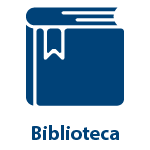 El programa Doctorado en Ciencias en convenio con las Universidades del Quindío, Tecnológica de Pereira y Caldas tiene el gusto de invitarlo a participar en la conferencia relacionada a continuación:
El programa Doctorado en Ciencias en convenio con las Universidades del Quindío, Tecnológica de Pereira y Caldas tiene el gusto de invitarlo a participar en la conferencia relacionada a continuación:
Programación
Seminario Permanente “Yuri Alexander Poveda Quiñones”
Título: «Physics, Origin, and Design of Novel Functional Materials with Controllable Spin-Splitting»
Conferencista invitado:
Andrés Camilo García Castro realizó su pregrado en la Universidad Tecnológica de Pereira para luego obtener su maestría en Ciencias con Especialidad en Materiales en el CINVESTAV (México). Posteriormente, realizó un doble doctorado contando con un Ph.D. en Física en la Université de Liège (Bélgica) y un doctorado en Materiales del CINVESTAV (México). Con posdoctorados en Estados Unidos y Bélgica actualmente cuenta con un h-index 12 y más de 20 publicaciones en revistas internacionales en journals como Physical Review Letters, Advanced Functional Materials, Nature, entre otras. Su área de desempeño contempla el estudio en física teórica de la materia condensada en sistemas magnéticos y multiferróicos altamente correlacionados. Actualmente, es profesor de tiempo completo en la Escuela de Física de la Universidad Industrial de Santander (Bucaramanga) y su investigación se centra en explorar las interacciones magnéticas y electrónicas en sistemas quirales.
Fecha y hora: jueves, octubre 28 de 2021. Hora: 3:00 p.m.
Sala virtual: https://renata.zoom.us/j/ 88169832442
Physics, Origin, and Design of Novel Functional Materials with Controllable Spin-Splitting
Prof. A. C. García-Castro
1Escuela de Física, Universidad Industrial de Santander, Bucaramanga, Colombia
Ferroelectric Rashba semiconductors (FERSC), in which Rashba spin-splitting can be controlled and reversed by an electric field, have recently emerged as a very exciting new class of functional materials. However, full exploitation of the concept is still hampered by the lack of known robust ferroelectric compounds showing large Rashba spin splitting. Here, we rationalize the search of efficient FERSC within the family of perovskite oxides relying on first-principles calculations. We first highlight that the coexistence of large spontaneous polarisation and spin-orbit coupling is not sufficient to have good FERSC properties and we establish why simple ferroelectric oxide perovskites with transition metal at the B-site are typically not suitable candidates. Then, we show how this intrinsic limitation can be by-passed through interface engineering of the electronic band structure in layered perovskites and identify the ferroelectric Bi2WO6 Aurivillius phase as a promising FERSC compound. The role of distinct atomic distortions on the Rashba spin splitting is discussed. We further show that Bi2WO6 preserves its ferroelectric properties over substantial n-doping. This last feature also makes it attractive for other applications, which will be briefly discussed.
Work done in collaboration with H. Djani, W.-Y. Tong, E. Bousquet, P. Barone, S. Picozzi and Ph. Ghosez and supported by the ARC-project AIMED.
H. Djani, A. C. Garcia-Castro, Wen-Yi Tong, E. Bousquet, Paolo Barone, Silvia Picozzi, and Ph. Ghosez, “Rashba spin-splitting in ferroelectric oxides: from rationalising to engineering”, Nature NPJ Quantum Materials, 4, 51, (2019).











